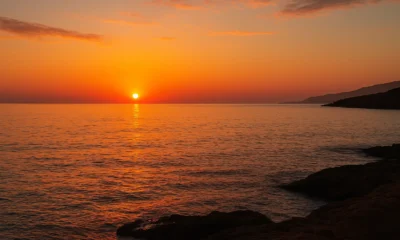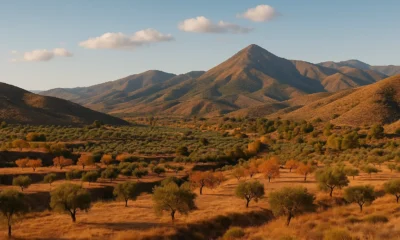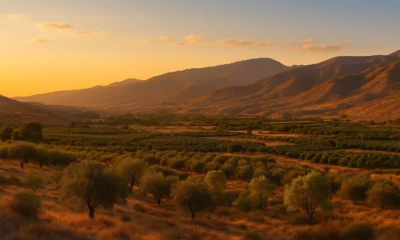Expats & Living
Weekly Markets in Almería: Full Guide to Mercadillos Across the Province
Published September 2, 2025 | Category: Travel Tips, Towns & Villages
TL;DR: Almería hosts 91 weekly markets across the province. From Plaza Pavía in the capital to village markets in Mojácar, Vera, and Carboneras, there’s a mercadillo almost every day. Here’s the full guide.
Weekly Markets in Almería: Full Guide to Mercadillos Across the Province
Table of Contents
- The tradition of mercadillos in Almería
- Weekly markets in Almería city
- Markets across the province of Almería
- Markets by day of the week
- Tips for visiting local markets
- Conclusion: Experience authentic Almería
The tradition of mercadillos in Almería
Weekly open-air markets, known locally as mercadillos, are a vital part of life in Andalusia. They offer everything from fresh fruit and vegetables to clothes, shoes, plants, and household items. For visitors, they provide a unique chance to experience Andalusian street life, taste local products, and shop like the locals. In the province of Almería, markets are held in virtually every town and village, often on the same day of the week for generations.
Weekly markets in Almería city
The capital city of Almería hosts several markets spread throughout its neighborhoods. The most famous is the Plaza Pavía market, open from Monday to Saturday and known for its fresh produce and fish stalls. In addition, the city has seven rotating mercadillos:
- Mercadillo del Estadio – every Tuesday, around the Estadio de los Juegos Mediterráneos.
- Mercadillo del Auditorio – every Saturday, next to the Maestro Padilla Auditorium.
- Mercadillo de Cabo de Gata – every Saturday, in the coastal village of Cabo de Gata.
- Mercadillo de El Alquián – every Sunday morning.
- Mercadillo de Los Ángeles – during the week in the Los Ángeles neighborhood.
- Mercadillo de Bola Azul – a popular neighborhood market.
- Mercadillo de Plaza de Pavía – the daily market hub for fresh produce.
Together, these markets ensure that Almería city has lively street markets nearly every day of the week. For official information, check the Ayuntamiento de Almería.
Markets across the province of Almería
Beyond the capital, Almería province is famous for its rich network of weekly markets. According to official listings, there are around 91 weekly mercadillos, spread across every day of the week. Popular markets include:
- Huércal-Overa – Monday.
- Albox – Tuesday, one of the largest inland markets.
- Mojácar – Wednesday, held in Plaza del Rey Alábez.
- Carboneras – Thursday, close to the seafront.
- Garrucha – Friday, along Calle Miradores.
- Vera – Saturday, spreading across Plaza Mayor.
- Villaricos – Sunday, a coastal market with summer buzz.
These are just highlights – almost every town, from Vélez Rubio to Sorbas, has its own weekly event. Together, they form one of the richest market traditions in Andalusia. A complete overview is available at mercadillosemanal.com.
Markets by day of the week
Here is a summary of how many markets take place each day across the province:
- Monday – 8 markets (e.g. Huércal-Overa, Antas, Rioja)
- Tuesday – 12 markets (e.g. Albox, Cuevas del Almanzora, Los Gallardos)
- Wednesday – 14 markets (e.g. Mojácar, Bédar, Lubrín, Vélez Blanco)
- Thursday – 16 markets (e.g. Carboneras, Roquetas de Mar, Purchena, Sorbas)
- Friday – 12 markets (e.g. Garrucha, Turre, Zurgena, Macael)
- Saturday – 14 markets (e.g. Vera, Arboleas, Vélez Rubio)
- Sunday – 12 markets (e.g. Villaricos, La Alfoquía, San Juan de los Terreros – summer only)
This means there is always a market happening somewhere in Almería province, no matter the day.
Tips for visiting local markets
- Go early – Markets usually open around 9:00 and close by 14:00. Arrive early for the freshest produce.
- Bring cash – Many stalls do not accept cards, especially in smaller villages.
- Expect variety – From fruit and vegetables to shoes, textiles, and souvenirs, mercadillos are a blend of essentials and bargains.
- Parking advice – In towns like Vera or Garrucha, arrive early to secure parking nearby.
- Authentic experience – Don’t just shop; enjoy a coffee or tapas nearby to make it a true Andalusian outing.
Conclusion: Experience authentic Almería
The weekly markets of Almería are more than just shopping spots – they are lively social hubs that bring together locals and visitors. Whether in the capital at Plaza Pavía, in the coastal town of Garrucha, or in the mountain villages of Vélez Blanco and Bédar, each mercadillo offers its own flavor of Andalusian life. For travelers, they are a must-visit tradition that blends food, culture, and community.
For more updates from across the province, visit our News section or browse the Travel Tips category.
Expats & Living
Almeria Airport Winter 2025: New UK Routes Boost Flights by 12%
Published November 1, 2025 | Category: Infrastructure
TL;DR: Almeria Airport launches its new 2025–26 winter schedule with record growth — two new UK routes to Liverpool and Bristol bring a 12% rise in available seats and 10% more flights compared to last winter.
Almeria Airport Winter 2025: New UK Routes Boost Flights by 12%
The winter flight schedule for Almeria Airport (LEI) has officially begun with significant growth, according to Aena and Spain’s Ministry of Transport. For the 2025–26 season, airlines have scheduled a total of 284,000 seats and more than 2,600 operations to and from Almeria — a year-on-year increase of 12.4% in capacity and 10.7% in flights.
Table of Contents
- 1. Overview of the 2025–26 Winter Season
- 2. New UK Routes: Liverpool and Bristol
- 3. Domestic and International Breakdown
- 4. Economic and Tourism Impact
- 5. Regional Context and Airport Performance
- 6. Looking Ahead to 2026
1. Overview of the 2025–26 Winter Season
Almeria Airport’s new winter schedule — running from late October 2025 through March 28, 2026 — reflects a coordinated effort to expand the city’s air connectivity and reduce tourism seasonality. The airport will operate a total of 284,000 available seats across domestic and international routes, confirming Almeria’s growing importance as both a tourism and business hub in southeastern Spain.
The airport director, Ignacio Tejero, expressed optimism in a public statement, highlighting “the aviation sector’s renewed confidence in Almeria and the strong cooperation between airlines, tourism boards, and regional authorities.”
2. New UK Routes: Liverpool and Bristol
This season introduces two new routes connecting Almeria directly with the United Kingdom: Liverpool and Bristol. These additions build upon existing services to London (Gatwick), Madrid, Barcelona, Melilla and Palma de Mallorca, expanding Almeria’s reach within the UK market — a key source of year-round visitors to Andalusia’s coast.
As previously reported in our coverage of EasyJet’s Liverpool–Almeria route, the airline expects strong demand throughout winter 2025–26. The new Bristol service further strengthens the province’s connectivity to western England, complementing the popular London and Liverpool routes already in operation.
Both routes are operated by EasyJet and are scheduled to run twice weekly during the winter season, connecting UK passengers directly to Almeria’s tourism hubs — including Roquetas de Mar, Mojácar, El Toyo, and Vera.
3. Domestic and International Breakdown
Of the total 284,000 available seats, 222,844 correspond to domestic flights (+1.9% year-on-year), while 61,190 are allocated to international operations — a staggering +80.2% compared with last winter. This surge is largely driven by the UK market and charter services expanding into northern Spain and select European cities.
In addition to regular scheduled flights, charter connections will continue throughout the season to destinations such as A Coruña, Vigo and Zaragoza, along with occasional one-off operations to Berlin, Istanbul, Marrakech and Tetouan. These ad hoc routes highlight Almeria’s increasingly diverse connectivity profile.
4. Economic and Tourism Impact
The new winter flight programme is a clear indicator of confidence in Almeria’s tourism potential. The Junta de Andalucía estimates that each 10% increase in air capacity generates roughly 30,000 additional overnight stays in the province. By that measure, the airport’s current growth could contribute up to 90,000 extra hotel nights over the next five months.
Local tourism operators in El Toyo, Mojácar, Roquetas de Mar and Vera — areas that traditionally slow down after summer — expect this schedule to help extend the season. British and northern European travellers remain the primary targets, as Almeria continues to market itself as a “sun-all-year” destination.
Hotel associations such as ASHAL (Asociación de Hostelería de Almería) have also welcomed the increased air connectivity, citing higher winter bookings and stronger interest in mid-range resort stays.
5. Regional Context and Airport Performance
Nationally, Spain’s airports managed by Aena are experiencing similar trends. The operator reported that for the 2025–26 winter season, Spanish airports overall will handle 3.5% more seats and 3.3% more operations than last year — continuing a post-pandemic expansion that began in 2023. (Aena Press Release, Oct 2025).
According to the MITMA Air Traffic Report (July 2025), Almeria registered nearly one million passengers between January and September 2025, an 11% increase over the same period in 2024. The upward trend is expected to continue through the end of the year, supported by renewed international demand and improved domestic connectivity.
6. Looking Ahead to 2026
With the new routes and increased flight frequencies, Almeria Airport is positioned for sustained growth heading into 2026. The introduction of additional UK services may pave the way for further connections to northern Europe — including potential seasonal routes to Manchester and Amsterdam.
Furthermore, ongoing works at the future AVE high-speed rail station in Almeria will improve intermodality between air, train and road transport by 2027, enhancing accessibility and reinforcing the airport’s strategic role in southeastern Spain.
For now, the expansion of Almeria Airport’s winter schedule is both a logistical and symbolic milestone: proof that the region’s tourism and transport sectors are thriving well beyond the traditional summer season.
For more updates from across the province, visit our Infrastructure category.
Events
What to Do in Almeria: Late October & Early November 2025
Published October 26, 2025 | Category: Events
TL;DR: Wondering what to do in Almeria this October 2025? Here’s a curated roundup of the best festivals, concerts, outdoor routes and community happenings across the province — from the Garrucha Red Prawn Festival to Almerijazz, Halloween parades and mountain bike adventures.
What to Do in Almeria: Late October & Early November 2025
As autumn sets in, Almeria’s cultural calendar comes alive with local fairs, music festivals, gastronomy routes and outdoor activities. Whether you’re drawn to coastal celebrations, mountain trails or creative workshops, there’s something happening in nearly every corner of the province. Below is your essential guide to the most exciting things to do in Almeria from late October through early November 2025.
Table of Contents
Festivals and Fairs
Late October in Almeria is defined by lively festivals that blend tradition with community spirit. In Garrucha, the VI Red Prawn Festival celebrates one of the Levante coast’s most prized delicacies with tastings, music, and family-friendly events through October 26. Organised by the Diputación de Almería and the Ayuntamiento de Garrucha, the event draws thousands of visitors and local chefs celebrating the region’s famous red prawn.
Meanwhile, in Huércal de Almeria, car and motor enthusiasts gather for HuércalMotor 2025, a three-day auto and motorcycle show featuring 22 brands, exclusive offers, and entertainment for all ages. It’s coordinated by the Ayuntamiento de Huércal de Almería with regional business sponsors and free entry for visitors.
For more upcoming fairs and city festivals, visit our Events category.
Culture and Music
The highlight of Almeria’s cultural season is the Almerijazz International Festival 2025, running through November 9. Concerts take place at Teatro Apolo and other city venues, featuring Spanish and international artists in collaboration with Radio Nacional de España (RNE). The festival, coordinated by the Ayuntamiento de Almería, offers both free and ticketed shows and continues to position Almeria as a cultural hub in southern Spain.
Two new art exhibitions also stand out this season. Cianotipia explores experimental photography techniques, while Jardín de Sal examines the intersection between salt, art, and ecology. Both are hosted at municipal galleries and open until early November.
Discover more cultural and musical highlights in our Community section.
Sports and Outdoors
Nature and sport merge during the XVI Ruta BTT del Jamón de María, held this weekend in the Parque Natural Sierra de María–Los Vélez. Dozens of cyclists joined this emblematic mountain-bike route celebrating local gastronomy and endurance. The race forms part of the XCM Series Almeria 2025 and is organised with the support of the Diputación de Almería and Federación Andaluza de Ciclismo.
For hikers, the recent rainfall in Bedar and the Sierra de los Filabres has refreshed rural routes. Authorities from the Junta de Andalucía confirm that major trails remain open and safe, with excellent conditions for late-autumn trekking.
For outdoor guides and nature routes, visit our Nature & Environment category.
Food and Gastronomy
Beyond Garrucha’s seafood festivities, food lovers can explore the ongoing Ruta Sabores del Almanzora, a gastronomic route connecting 20 villages and more than 40 establishments across the Valle del Almanzora. It runs through November and is coordinated by Valle del Almanzora Turismo, promoting traditional tapas, wines and local produce from inland Almeria.
In Tabernas, the Autumn Cultural Programme continues through late November, offering outdoor cinema, desert walks and artisan markets. The initiative, supported by the Ayuntamiento de Tabernas, showcases the natural and creative spirit of the desert region.
For culinary experiences and local products, check our Travel Tips section.
Community and Family
Halloween brings community life to the streets of Almeria. The Noche en Negro, organised by the Ayuntamiento de Almería, transforms the city centre into a night of parades, silent film screenings, and live music inspired by 80s rock. Nearby, Benahadux celebrates a three-day Halloween programme filled with family workshops, games and costume contests led by the Ayuntamiento de Benahadux.
On October 31, the Cámara de Comercio de Almería hosts the “Visibilidad Local” workshop — an AI-focused session on improving business visibility and digital strategy for local entrepreneurs and expats. Registration is free via the Chamber of Commerce website.
For ongoing workshops and local initiatives, explore our Expats & Living category.
For more updates from across the province, visit our Events category.
Towns & Villages
Abla Guide. Discover Abla, Almeria — History, Nature, and Local Festivals
Published October 16, 2025 | Category: Towns & Villages
TL;DR: Abla is a charming mountain village at the foot of the Sierra Nevada, known for its Roman heritage, traditional festivals, local crafts, and peaceful rural lifestyle. Ideal for nature lovers, hikers, and those seeking authentic Andalusian life.
Discover Abla, Almeria — History, Nature, and Local Festivals
Set on the southern slopes of the Sierra Nevada, Abla is one of Almeria’s most historic and tranquil mountain villages. With cobblestone streets, whitewashed houses, and friendly locals, it offers a glimpse of authentic Andalusian village life far from the crowded coast. The town has deep roots that reach back to Roman times — historians identify it with the ancient settlement of Abula.
Today, Abla blends its agricultural heritage with a growing interest in rural tourism, hiking, and cultural activities promoted by the Ayuntamiento de Abla and the Junta de Andalucía.
Geography and Setting
Abla occupies an area of around 46 square kilometres and lies in the northwestern part of Almeria province, on the southern slopes of the Sierra Nevada, facing the Sierra de los Filabres. The village overlooks the upper course of the Nacimiento River, making it the natural gateway to the Alpujarra of Almeria. The surrounding landscape alternates between fertile valleys and gentle elevations such as “Cerrón de Guzmán” and “Loma de las Bazanas”, offering wide views over the mountains and olive groves.
Although its economy has traditionally been based on agriculture and livestock, Abla once hosted small industries such as distilleries, flour mills, and the production of olive oil, wine, cereals, and legumes. These activities, together with the breeding of wool cattle, sustained the village for generations. Today, rural tourism and traditional crafts continue that legacy, providing a small but steady source of local income.
Historical Highlights
Abla’s origins reach deep into antiquity. Many historians identify the modern village with the Roman settlement of Abula, mentioned by the geographer Ptolemy in his Geographia (Book II, 6, 60) as part of the Iberian region of Bastetania. Some scholars, however, propose that the reference might correspond instead to Ávila (ancient Obila), though Abla remains the most widely accepted identification among historians of Roman Hispania.
The municipality successively hosted Romans, Visigoths, and Muslims, each leaving their mark on its architecture and culture. The ruins of an Arab castle and the 2nd-century Roman mausoleum still bear witness to these layers of history. During the 15th century, conflicts between Christians and Moors led to a decline in population, but by the early modern period Abla had re-established itself as one of the first Christianized towns in southern Spain — a status that local tradition dates to the 1st century AD.
Visitors can still explore both the Arab castle remains and the Roman Mausoleum on the outskirts, along with the 16th- and 17th-century religious buildings that give the village its architectural charm. The parish church of La Anunciación, built in 1530, dominates the Plaza Mayor and remains a focal point for community life.
According to the Andalucía tourism portal, Abla also played a role during the Arab period, forming part of the Alpujarra route that connected Granada with the Mediterranean coast.
What to See and Do
- Mirador del Calvario: A panoramic viewpoint offering spectacular views of the Filabres mountains and the valley below — especially beautiful at sunset.
- Old Quarter Walk: Explore Abla’s narrow streets, whitewashed houses, and traditional courtyards filled with potted flowers.
- Local Crafts: The town is known for its traditional blacksmithing, basket weaving, and textile work, still visible in family workshops.
- Nature Trails: Several marked routes lead into the Sierra Nevada foothills. The “Ruta del Calvario” and the “Jairola Trail” are among the most popular. Maps are available at the Town Hall.
Local Festivals and Traditions
Abla celebrates several lively local festivals throughout the year, blending faith, music, and community. The best-known are the Fiestas de los Santos Mártires (Patron Saints’ Festival), held every April with processions, floral offerings, and open-air concerts. Summer brings the Fiestas de Verano, featuring music, dancing, and sports in the Parque Municipal. Both events attract visitors from nearby villages and returnees from abroad.
The official local holidays for 2025 are 28 April and 4 August, as recorded by the Junta de Andalucía’s provincial calendar. These dates correspond with Abla’s main celebrations and are great opportunities to experience village life up close.
Gastronomy
Abla’s gastronomy captures the essence of rural Almeria — simple, seasonal, and deeply rooted in tradition. The town’s cuisine shares much with the nearby Alpujarra region, featuring hearty mountain dishes prepared with local olive oil and fresh produce from the Nacimiento valley.
Signature recipes include migas almerienses (fried breadcrumbs with peppers and sausage), choto al ajillo (young goat cooked in garlic sauce), and comforting stews flavoured with local pimentón. Visitors will also find a variety of homemade sausages, mountain-cured hams, and almond-based sweets, all served in family-run restaurants and bars around the Plaza Mayor.
Getting There and Staying
Abla lies just off the A-92 motorway, about 55 km from Almeria city. The drive takes around 45 minutes, making it an ideal destination for a day trip or a peaceful rural stay. While accommodation options are limited, nearby towns such as Fiñana and Gérgal offer small guesthouses and rural homes.
Public transport is available via regional buses connecting Abla to Almeria, Guadix, and Granada, though schedules are limited. Travellers are advised to check timetables in advance via the Transport Consortium of Almeria.
Practical Information – Abla
- Town Hall (Ayuntamiento de Abla): Plaza Mayor, 1 — 📞 950 35 80 01 — www.abla.es
- Civil Guard (Guardia Civil): Ctra. Nacional 340, Km 385 — 📞 950 35 80 12
- Health Centre: Calle del Doctor Pérez, 10 — 📞 950 35 83 04
- Tourist Information: Inside Town Hall — open weekday mornings
- Emergency Numbers: 112 (General), 061 (Medical), 062 (Guardia Civil), 091 (National Police)
For more nearby destinations, visit our Towns & Villages category and explore the hidden gems of inland Almeria.
For local updates and community events, check our Community section.
Expats & Living
Things to Do in Almeria October 2025 – Festivals, Food, and Culture Across the Province
Published October 16, 2025 | Category: Events
TL;DR: October is packed with festivals, food routes, concerts, and local culture all over the province — from the Sabores del Almanzora to concerts in Almeria city and the legendary Costa de Almeria Rally.
Things to Do in Almeria October 2025
Table of Contents
Gastronomy and Food Festivals
October is the tastiest month of the year in the province of Almeria, with food routes and festivals taking over towns from the coast to the interior. The 3rd Ruta Sabores del Almanzora runs throughout the month, uniting more than twenty villages and over forty-five bars and restaurants. Visitors can enjoy traditional tapas, artisanal products, and participate in a “passport” activity that rewards explorers with local prizes. The event celebrates the agricultural richness of the Almanzora Valley and encourages slow travel and local discovery (official site).
In Arboleas, the XXII Jornadas Gastronómicas continue the celebration of local flavours with a vibrant “Ruta de la Tapa Nazarí”, featuring medieval-inspired dishes and tastings of olive oils, wines, and homemade desserts. This year’s event also includes a crafts market and live music in the town square, turning Arboleas into a lively culinary destination.
Further south, the coastal town of Garrucha is preparing for the 6th Gamba Roja Festival from 24–26 October. The event honours the famous red shrimp that has put Garrucha on Spain’s gourmet map. Chefs from all over Andalusia will participate in showcookings and tastings right by the marina, accompanied by local wines and family-friendly entertainment. It’s one of the top seafood festivals in southern Spain and a must for visitors who want to experience Almeria’s coastal cuisine at its best.
Meanwhile, the brand Sabores Almeria continues to shine internationally, recently confirming its participation at the Expo 2025 in Osaka, where the province’s gastronomy will be showcased on a global stage — a reflection of how Almeria’s culinary identity is evolving beyond local borders.
Cultural Events and Performances
Culture lovers are spoilt for choice this October. The Autumn 2025 cultural programme in Almeria city offers theatre, music, and family shows every week. Highlights include the play “Marqueses y Barones” (October 15), the poetic performance “Candilena: Tonada y Luz” (October 18), and “No me toques el cuento” (October 24), a witty feminist reinterpretation of classic fairy tales.
On October 19, the Banda Municipal de Almeria will perform “Ensueños Andaluces”, a concert dedicated to Andalusian soundscapes, while that same evening the stage welcomes “Popeye, el musical” for families and a tablao flamenco for lovers of traditional dance and guitar. Most performances take place at the Teatro Apolo and Teatro Cervantes, two of the city’s most emblematic venues (official agenda).
Beyond the capital, several municipalities host smaller-scale cultural events: in Berja, the Gata Brass Band will perform “Paraíso Gata” on October 31, and in Alhama de Almeria, Diego Pecharromán will give a live concert as part of the Diputación’s provincial programme Cultura en la Provincia. These initiatives ensure that culture reaches every corner of Almeria, from the coast to the Sierra de los Filabres.
Sporting Highlights and Outdoor Activities
October also offers plenty of opportunities for those who enjoy sports and nature. The biggest upcoming event is the Rally Costa de Almeria 2025, celebrating its 50th edition on 31 October and 1 November. It is one of the most emblematic races in Andalusia and brings drivers and fans from all over Spain. The route crosses several municipalities, offering spectators scenic views of the Almerian landscape — from desert roads to mountain passes (more info).
In El Toyo, construction has begun on a brand-new beach sports complex, set to make the area a future international hub for volleyball, rugby, and beach football. Although it’s still in development, the “Arena Center El Toyo” represents a major step toward positioning Almeria as a sports-tourism destination. Funded through the European Union’s Next Generation program, it’s expected to open in early 2026, reinforcing Almeria’s reputation for sun, sea, and active living.
In the meantime, hikers and cyclists can enjoy the cooler autumn weather to explore natural gems such as the Cabo de Gata-Níjar Natural Park, the Tabernas Desert, or the scenic trails around Sierra Alhamilla. The season’s mild temperatures make October one of the best months of the year for outdoor adventures in Almeria.
Concerts and Music This October
Music lovers can look forward to a diverse lineup across the province. On October 17, comedian and musician Juan Amodeo brings his new show “013” to Teatro Cervantes, blending humour, music, and social commentary. Later in the month, Arturo Pueyo and La Causa Swing & La Funkería will perform in the same venue, adding jazz, funk, and Andalusian rhythms to the mix.
Smaller towns such as Vera, Roquetas de Mar, and El Ejido are also updating their concert calendars with tribute acts, pop-rock evenings, and flamenco nights as part of the wider provincial programme Diputación Cultura. These free or low-cost concerts are perfect for anyone travelling through Almeria and looking for an authentic night out.
Day Trips and Local Discoveries
October is also ideal for exploring beyond the main events. Visitors can combine cultural plans with scenic drives — for instance, following the “Ruta de los Pueblos Blancos” through the Alpujarra Almeriense, visiting hidden gems like Paterna del Río and its Agua Agria recreation area, or enjoying coastal viewpoints in Mojácar and Carboneras. These quieter experiences complement the festival calendar perfectly, allowing travellers to balance excitement with tranquility.
Many towns host their own small fairs or local markets this month, featuring artisans, gastronomy, and traditional music. Evenings are pleasantly cool, making it easy to stroll through historic centres such as Vera, Níjar, Sorbas, and Adra without the summer heat.
Final Thoughts: Enjoying October in Almeria
Almeria in October is alive with flavour, rhythm, and colour — a month where food, culture, music, and sport blend into one unforgettable experience. From seafood feasts on the coast to flamenco nights and mountain escapes, every corner of the province has its own story to tell.
This month captures the best of Andalusia’s autumn atmosphere — still warm enough for the beach, yet cool enough for exploring inland towns and cultural venues. It’s the perfect moment to dive into the rhythm of local life and discover why Almeria remains one of Spain’s most authentic destinations.
For more updates from across the province, visit our Community category.
-
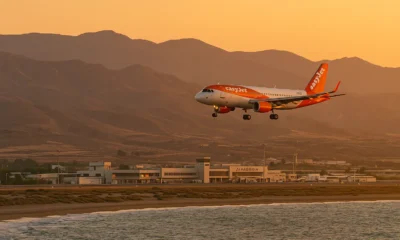
 Almeria News2 weeks ago
Almeria News2 weeks agoEasyJet launches new Liverpool–Almeria flight
-

 Events2 weeks ago
Events2 weeks agoAlbox All Saints Fair 2025 — Five Days of Music, Food & Tradition
-

 Almeria News2 weeks ago
Almeria News2 weeks agoRally Costa de Almeria 2025 — 50th Rally: Route, Timetable & Entries
-
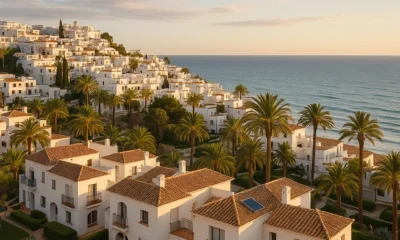
 Real Estate & Economy6 days ago
Real Estate & Economy6 days agoAlmeria Property Prices 2025: Vera Leads Andalusia with Record 72.9% Rise
-
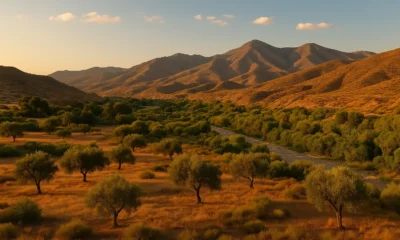
 Travel Tips2 weeks ago
Travel Tips2 weeks agoAlhabia Guide. Discover Alhabia, Almeria — Valley Life, History & Scenic Walks
-

 Almeria News7 days ago
Almeria News7 days agoAll Saints Fair in Albox Begins Today














